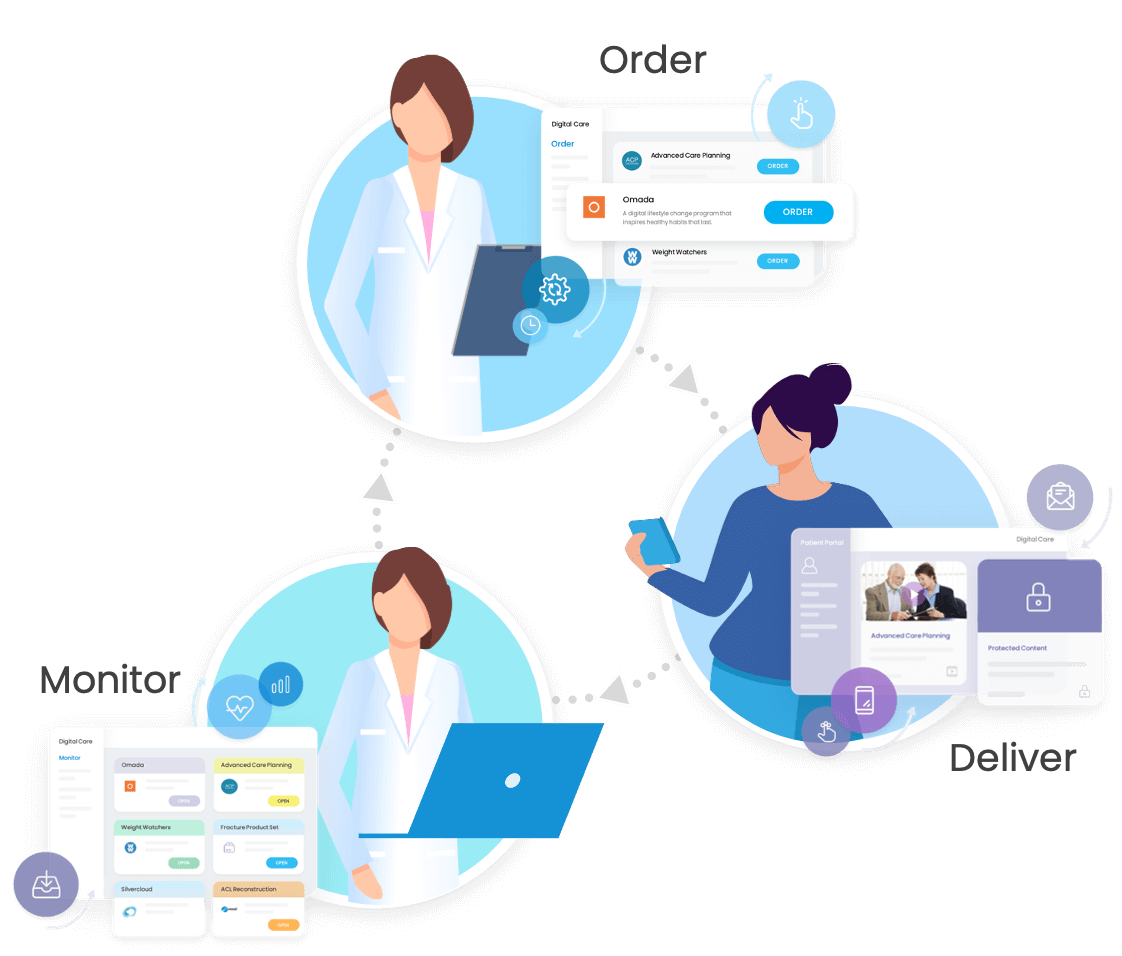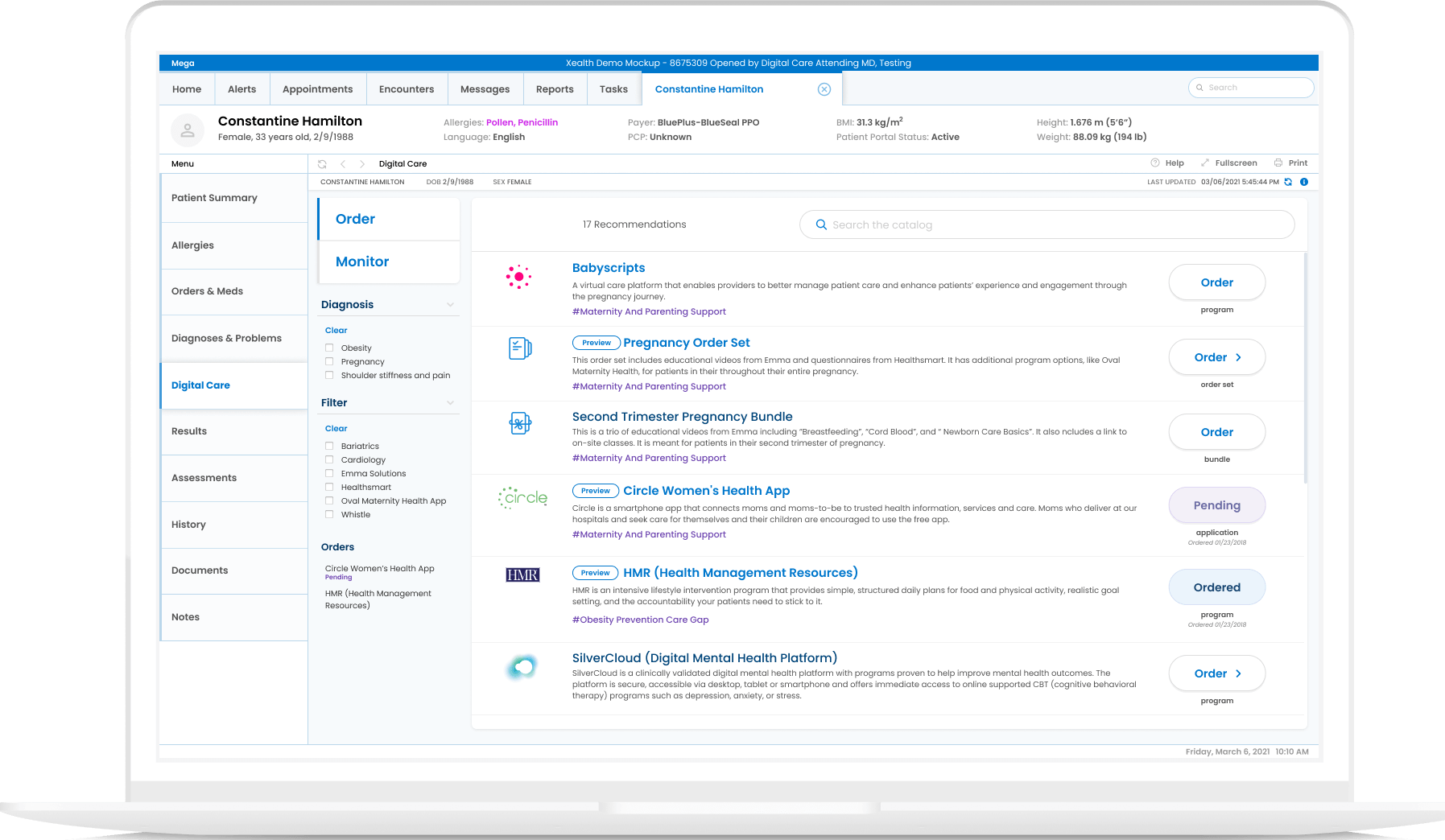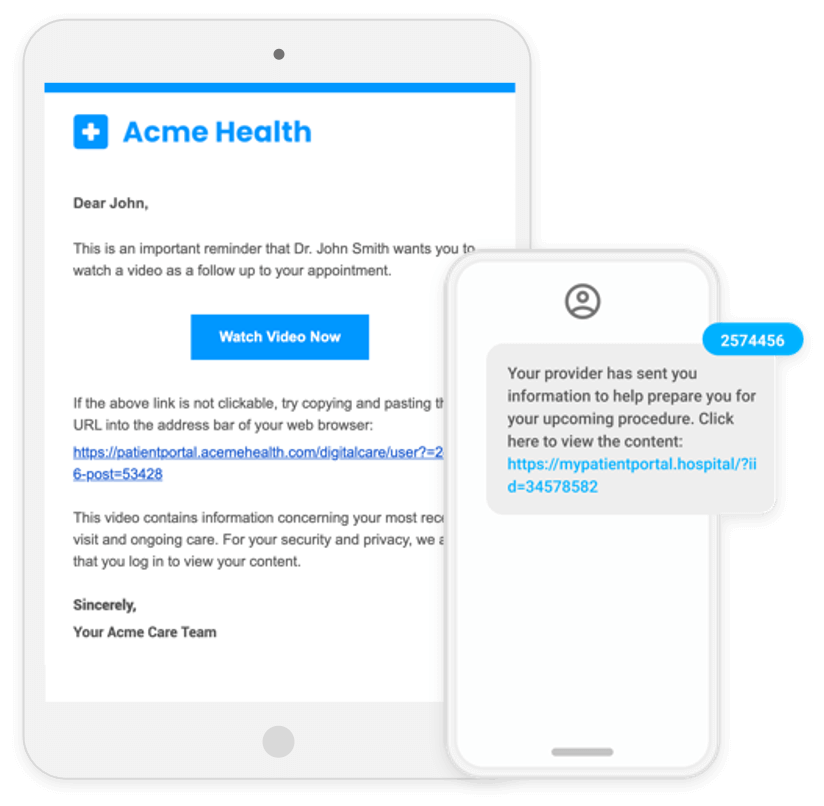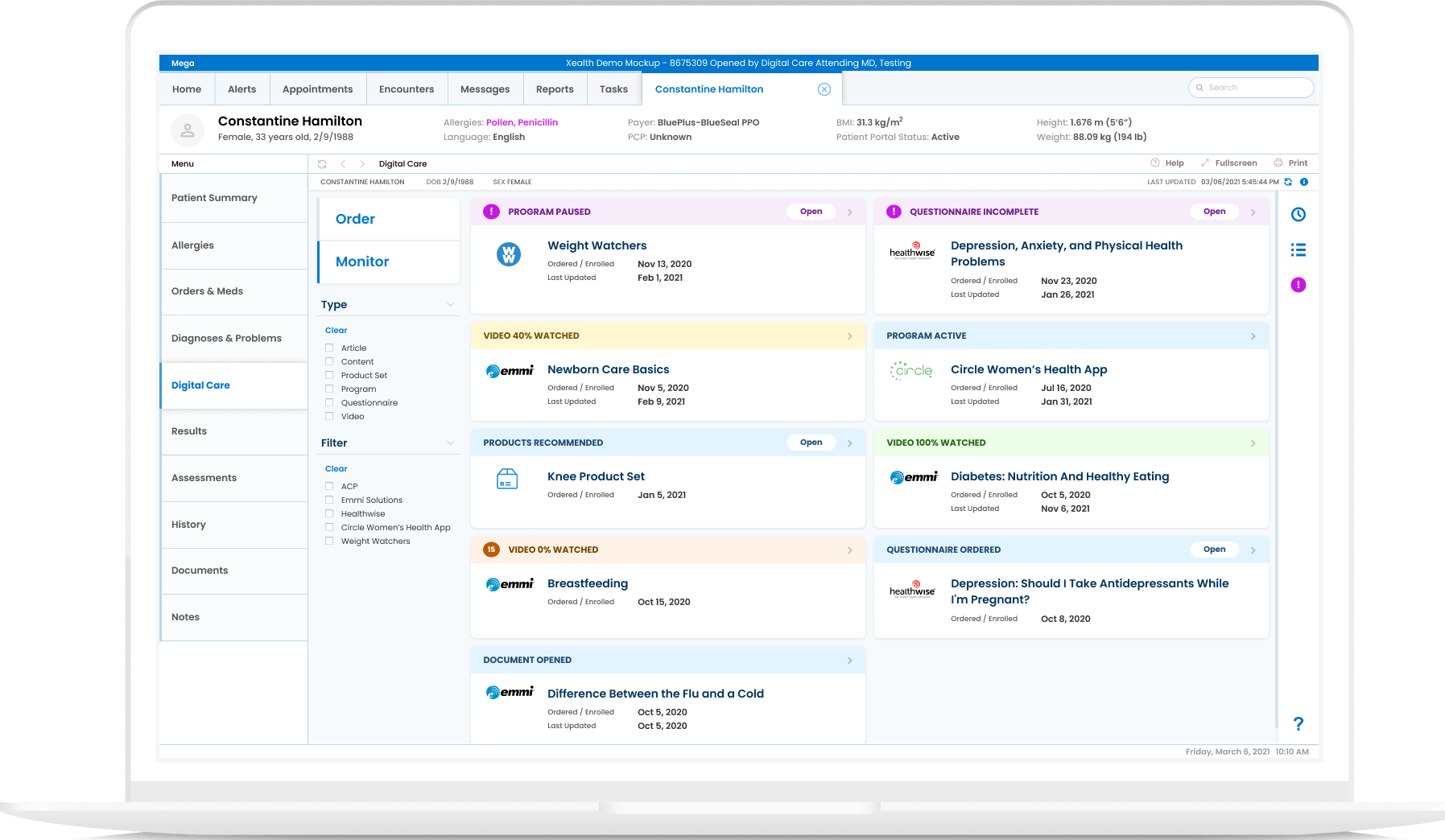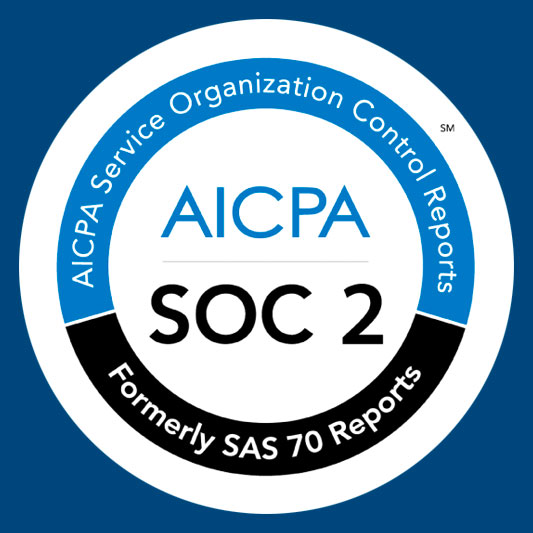The Digital Care SMART on FHIR app enables physicians and care teams to Order, Deliver, and Monitor digital health tools from the EHR, with clinical decision support matching patients to relevant solutions. The app can be downloaded from the EHR’s app stores and configured by the health system team to launch directly in the provider’s charting workflow. This integration provides Xealth the ability to leverage data in the EHR to suggest and automatically enroll patients into a variety of programs.
Xealth Platform
Xealth Digital Care SMART on FHIR App
Order from Existing Workflows
Xealth’s clinical rules engine can automatically distribute tools, assets and program enrollment information to specified patient groups, or present relevant solutions within the patient record in the EHR for manual ordering. Xealth can also be triggered by EHR alerts during a patient visit, directing the clinician to Digital Care to make it easy to order relevant digital health options, saving time.
Deliver via Email and Patient Portal
Once digital assets and tools are ordered, Xealth can manage all elements of delivery and enrollment, either by sending assets directly via email or SMS, or placing them inside a digital care section of the patient portal. Xealth also can accommodate custom patient portals, further enabling the health system’s efforts to control the patient experience.
As patients engage with content, enroll in programs, and interact with their portal accounts, Xealth can track that activity. If engagement is lagging, Xealth can be configured to send reminders and nudges, if desired.
Monitor Direct Within the EHR
Xealth then brings monitoring information back into the health system, so that care teams can follow the patient’s progress or drive interventions accordingly. Digital Care even embeds third-party dashboards inside the EHR, making it easy for clinicians to see what’s happening with their patient without having to leave the patient record. Discrete patient data, like PHQ9 scores or blood pressure readings, can be written into the patient’s chart so that it’s stored alongside the other similar data for easy consumption by the clinician. This even allows downstream workflows like notifications, best practice alerts, and patient flags to be generated within the record.


